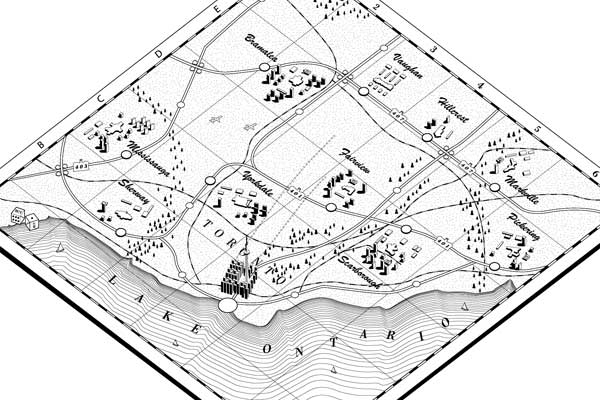
Transforming the city: experts from across North America gather for symposium on urban development
Published: February 27, 2015
The University of Toronto’s John H. Daniels Faculty of Architecture, Landscape and Design is hoping to reshape the conversation around urban development this weekend.
Its three-day symposium, titled After Empirical Urbanism, is bringing together academics from across North America – including Harvard University, Massachusetts Institute of Technology, University of Illinois at Chicago, Columbia University and U of T.
The goal: to talk critically about how to merge traditional ideas of grand architectural design with more recent approaches that have succumbed to data-driven analysis or street-level observations from other fields.
Assistant Professor Michael Piper organized the event, hoping to inspire architects to revisit their artistic side – while not entirely ignoring the data and research out there.
Traditionally, the concept of urbanism has stood for city planning, urban design and architecture, says Piper. But in recent years the topic has become too broad and now encapsulates ethnology, anthropology and data analysis with statistical and visual tools such as Geographic Information Systems (GIS).
Piper says the new empirical urbanism – hence the title of the symposium – has relied on methods of observation from the natural and social sciences, and in many ways taken architects far away from focusing on design.
“What’s happened is that architects and planners have become less assertive in making big design plans and they’ve become more about addressing how people live in cities,” Piper says. “What happened for better or worse is we’ve suppressed our own artistic impulses.”
It all began in the mid-1970s, says Piper, when urban planners inspired by Robert Moses, the “master builder” of mid-20th century New York City, and Le Corbusier, considered one of the pioneers of modern architecture, began overhauling cities with concrete highways, skyscrapers and cell-like public housing projects. In recent years, many of those projects have faced criticism for overlooking their impact on residents. In some cities like Chicago and Toronto, the public housing projects have since been demolished.
Urban planners then began rejecting that traditional big design approach, favouring one that was more responsive to the needs of the community and reflected data and observations that looked at how people live in the city, Piper says.
Yet some architects want to go back to creating grand urban plans that call for revamping cities.
“What’s happening now in architecture is people are reacting against observations and evidence-based urbanism, and they’re trying to go back to grand visions,” Piper says.
But rejecting empirical research is not the answer, says Piper, adding the conference hopes to reposition the data and observation-based practices within the field of urban planning.
“What we’re saying is, 'let’s stop reacting against how the discipline works and try to integrate methods of observation (like using data) with the practice of design'. In so doing, we’re hoping to make good visions more sensitive.”
The sessions, which began at 1:30 pm February 27 and run through the afternoon of Sunday, February 28 at 230 College Street, will also delve into maps and statistical data and the biases that emerge from them.
The discussions are open to the public and entry is free. (Read more information about the event.)
Noreen Ahmed-Ullah is a writer for U of T News.



